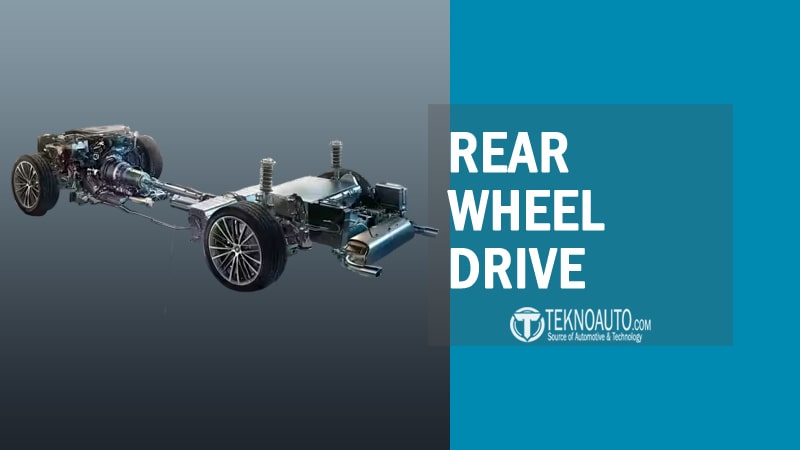There’s a certain feeling you get when you press the accelerator and the rear wheels push the car forward—it’s planted, powerful, and undeniably connected to the road. This is the essence of Rear Wheel Drive (RWD), a drivetrain configuration that has been part of automotive engineering for over a century. From classic muscle cars to modern performance sedans, Rear Wheel Drive (RWD) has long been associated with spirited driving, balanced handling, and mechanical purity.
But in an era dominated by front-wheel drive and all-wheel drive systems, where does Rear Wheel Drive stand today? Is it a relic of the past, or a cornerstone of automotive performance that continues to evolve with technology?
In this article, we’ll break down everything you need to know about Rear Wheel Drive. You’ll learn how it works, how it differs from other drivetrain layouts, and why it’s still the go-to setup for driving purists, luxury automakers, and heavy-duty vehicle manufacturers alike. We’ll also explore the pros and cons of RWD, the types of vehicles that still rely on it, and what it means for you as a driver—whether you’re navigating daily commutes or carving corners on the weekend.
So if you’ve ever wondered what makes Rear Wheel Drive special—or whether it’s the right choice for your next vehicle—this deep dive will give you the clarity and context to decide.
What Is Rear Wheel Drive?
At its core, Rear Wheel Drive (RWD) is a drivetrain layout where the engine sends power to the rear wheels of the vehicle. Unlike front-wheel drive (FWD), where the front wheels handle both steering and propulsion, RWD separates these responsibilities—allowing the front wheels to steer while the rear wheels handle power delivery. This division creates a more balanced and dynamic driving experience, which is why it has remained the standard in performance and luxury vehicles for decades.
In a typical Rear Wheel Drive setup, the engine is mounted longitudinally—that is, front to back rather than sideways—aligning directly with the driveshaft that runs beneath the vehicle. Power travels from the engine through the transmission, into the driveshaft, then into the rear differential, which splits torque between the two rear wheels. This chain of components creates a smoother power transition and can handle more torque compared to FWD configurations.
Key Characteristics of Rear Wheel Drive:
- Power Delivery: To the rear axle only
- Engine Orientation: Longitudinal (front-to-back)
- Drivetrain Components: Driveshaft, rear differential, rear axle
- Steering and Power Separation: Steering via front wheels, power via rear wheels
- Typical Use Cases: Performance cars, luxury sedans, trucks, full-size SUVs
Rear Wheel Drive has been a staple since the early 20th century, when most cars were built with body-on-frame construction and longitudinal powertrains. It wasn’t until the late 1970s and early 1980s that front-wheel drive began to dominate the compact and midsize market. Despite that shift, RWD has persisted—especially in vehicles that prioritize driving performance, weight distribution, or heavy-load capability.
One of the main reasons RWD is favored in sports cars and race cars is because it naturally distributes the car’s weight more evenly between the front and rear axles. This improves handling during cornering and acceleration, especially at high speeds or under performance conditions. When a vehicle launches forward under throttle, weight transfers toward the rear—meaning the driven wheels (in an RWD layout) benefit from increased traction in that moment.
Rear Wheel Drive also reduces torque steer, a common issue in powerful FWD vehicles where the steering wheel pulls to one side under acceleration. Since RWD separates the steering and driving functions between different sets of wheels, it delivers a cleaner, more linear feel—especially under pressure.
That said, RWD isn’t always the best choice for every scenario. In slippery conditions like snow or rain, Rear Wheel Drive can struggle with traction, especially when not paired with modern stability control systems. Still, for drivers who prioritize precision, balance, and control, Rear Wheel Drive remains a compelling and enduring choice.
How Rear Wheel Drive Works

To understand why Rear Wheel Drive (RWD) feels different from other drivetrains, you need to look at how it transfers power mechanically. The layout may be more complex than front-wheel drive, but it’s this very complexity that makes it capable of handling higher torque, offering better weight distribution, and delivering a more engaging driving experience.
In RWD systems, the engine’s power travels a longer and more segmented path before it reaches the wheels. Here’s how it works step by step:
1. Longitudinal Engine Layout
Most Rear Wheel Drive vehicles mount the engine longitudinally, meaning the crankshaft is aligned parallel to the car’s frame—pointing toward the rear axle. This orientation aligns the engine directly with the transmission and the driveshaft, simplifying the flow of mechanical energy.
Longitudinal engines are generally used in performance cars, luxury sedans, and trucks because they provide better balance and packaging flexibility for larger or more powerful engines, including V6, V8, and inline-6 configurations.
2. Transmission and Driveshaft
Power from the engine is delivered to the transmission, which adjusts gear ratios based on speed and load. In RWD vehicles, the transmission is typically connected to a driveshaft—a long rotating tube that runs underneath the vehicle.
This driveshaft is what carries torque from the transmission to the rear differential, acting as a direct mechanical bridge between the engine and the driven wheels. It rotates along its axis, transferring rotational force efficiently across the vehicle’s length.
3. Rear Differential and Axles
At the end of the driveshaft is the rear differential—a gear assembly that splits power between the left and right rear wheels. The differential adjusts torque dynamically so that both wheels can rotate at different speeds when turning, improving stability and reducing tire wear.
From the differential, power is sent to the rear axles, which are connected to the rear wheels. These axles spin and propel the vehicle forward, while the front wheels remain dedicated to steering.
RWD vehicles may use different rear axle types depending on their purpose:
- Live axle (solid rear axle): Common in trucks and muscle cars. Strong and durable but less refined over bumps.
- Independent rear suspension (IRS): Found in luxury and performance vehicles. Offers smoother ride and better handling at high speeds.
4. Weight Transfer and Traction
One of the unique characteristics of Rear Wheel Drive is how it takes advantage of weight transfer during acceleration. When a car accelerates, weight naturally shifts to the rear of the vehicle. In RWD cars, this benefits the driving wheels by giving them more grip when it’s needed most—under hard acceleration.
This is the opposite of what happens in front-wheel drive vehicles, where the weight shifts away from the driving wheels, potentially causing wheel spin under load. This rearward weight bias in RWD also contributes to more balanced cornering behavior and predictable oversteer when pushed to the limit.
5. Steering and Power Separation
Another defining feature of RWD is the division of labor between the front and rear wheels:
- Front wheels: Handle steering and braking
- Rear wheels: Handle power delivery and braking
This separation allows the front wheels to focus solely on directional control, resulting in sharper steering feedback and a cleaner driving response. It’s especially noticeable during high-speed cornering, spirited driving, or when drifting—one reason why motorsport and enthusiast communities favor RWD platforms.
Summary of How RWD Works
| Component | Function |
|---|---|
| Longitudinal Engine | Orients crankshaft toward the rear axle |
| Transmission | Adjusts gear ratios for power delivery |
| Driveshaft | Transfers rotational force to the rear differential |
| Rear Differential | Splits power between rear wheels |
| Rear Axles | Transmit torque to each rear wheel |
| Suspension | Affects handling: solid axle vs. independent |
Rear Wheel Drive may involve more components than front-wheel systems, but its design prioritizes driving engagement, torque capacity, and vehicle balance. Whether it’s the thrill of a performance coupe or the reliability of a work truck, RWD continues to serve drivers who demand more than just basic mobility—it offers control, precision, and character.
Advantages of Rear Wheel Drive
Rear Wheel Drive (RWD) systems have long been the foundation of performance cars, commercial vehicles, and luxury sedans—and for good reason. While other drivetrain layouts may prioritize cost-efficiency or weather adaptability, RWD stands out in areas that matter most to driving enthusiasts and engineers alike: balance, control, and mechanical simplicity in high-load conditions.
Let’s explore the key advantages that continue to make Rear Wheel Drive a preferred choice in many automotive segments.
Superior Handling and Balance
One of the most celebrated benefits of RWD is its natural weight distribution and driving dynamics. By separating steering (front wheels) from power delivery (rear wheels), RWD creates a more stable and balanced platform, especially when cornering or accelerating.
Why it matters:
- Even weight balance between the front and rear axles enhances vehicle stability.
- Steering feels cleaner, with no interference from torque steer—common in high-powered front-wheel drive cars.
- During hard cornering, RWD vehicles are more likely to exhibit oversteer, which can be controlled with skill, offering a more dynamic driving experience.
This advantage is particularly valuable in sports cars and performance sedans, where precise handling, balance through corners, and predictable road behavior are essential. Drivers who enjoy spirited driving will find RWD far more responsive and intuitive, especially when pushing limits on twisty roads or racetracks.
Better Towing and Load Handling
Rear Wheel Drive vehicles are also superior when it comes to hauling cargo, towing trailers, or carrying heavy loads. This is why most trucks, vans, and commercial utility vehicles are based on RWD architecture.
Reasons why RWD is preferred in these scenarios:
- Power goes directly to the rear axle, which is better aligned with the load, particularly when weight is concentrated over or behind the rear wheels.
- In towing situations, RWD helps maintain traction and balance, especially during uphill climbs or while pulling heavy trailers.
- Solid rear axles (common in RWD trucks) provide increased durability and load-bearing capacity over time.
When the vehicle is heavily loaded, weight naturally shifts toward the rear—giving the rear wheels more grip and traction. This synergy between drivetrain layout and load dynamics is exactly why RWD remains the standard for pickup trucks, cargo vans, and large SUVs used for work or transport.
Ideal for Performance Cars
From classic muscle cars to modern supercars, RWD has always been the drivetrain of choice for vehicles designed with speed, power, and thrill in mind. There’s a mechanical purity to RWD that aligns with the goals of high-performance vehicles—delivering torque efficiently, allowing for nuanced control, and enabling advanced driving techniques like drifting, powersliding, or heel-and-toe downshifting.
Key performance advantages of RWD:
- Ability to put down more power without overwhelming the steering system.
- Better acceleration stability, especially in high-horsepower applications.
- More balanced vehicle dynamics in high-speed maneuvers.
Additionally, RWD platforms offer better support for rear-biased weight distributions, which are common in performance engineering. This setup improves corner exit grip and allows engineers to tune suspension geometry independently at the front and rear—something not easily achievable in FWD layouts.
It’s no surprise that iconic models like the BMW M3, Ford Mustang, Chevrolet Camaro, and Porsche 911 all maintain Rear Wheel Drive, especially in their purist or enthusiast trims.
Enhanced Driving Engagement
Rear Wheel Drive is more than just a mechanical layout—it’s an experience. For many driving enthusiasts, the feeling of controlling a car that pushes from the rear creates a deeper connection between the driver, machine, and road.
Here’s why driving purists love RWD:
- It allows for better throttle control when exiting corners.
- Skilled drivers can use power oversteer to rotate the car intentionally.
- Drifting is possible and controllable—especially in performance-tuned vehicles.
While RWD might demand more from the driver—especially in slippery conditions—it also rewards skill and technique, making every drive more interactive and personal.
Longevity and Simpler Front-End Design
Because RWD vehicles don’t send power to the front wheels, their front suspension and steering components are often less complex and under less stress. This can result in:
- Lower wear on front CV joints, bearings, and axle components.
- Easier access to engine bay for maintenance, thanks to longitudinal engine orientation.
Though the overall drivetrain may be more complex due to the driveshaft and differential, the division of function between front and rear ends can sometimes mean better durability and serviceability in specific areas—particularly for high-mileage or heavy-use vehicles.
The advantages of Rear Wheel Drive span handling, performance, towing strength, and driver engagement. While not always the ideal choice for snow-prone climates or ultra-compact cars, RWD offers capabilities that other layouts can’t fully replicate—especially when driving dynamics and power delivery matter most.
Disadvantages of Rear Wheel Drive
While Rear Wheel Drive (RWD) excels in driving dynamics, power delivery, and towing capability, it’s not without its limitations. As with any drivetrain layout, RWD represents a series of design trade-offs—many of which can become significant depending on how, where, and when you drive.
From poor traction in slippery conditions to higher costs and complexity, RWD may not always be the most practical option for everyday driving, especially for those living in regions with frequent snow, rain, or ice. Let’s explore some of the key drawbacks of Rear Wheel Drive to give you a full understanding of when and where it might fall short.
Traction Limitations in Poor Weather
One of the most well-known drawbacks of Rear Wheel Drive is its inferior traction on slippery surfaces—particularly in snow, ice, and wet road conditions. Because RWD sends power to the rear wheels (which are naturally lighter when the car is unloaded), it struggles to gain and maintain grip when the surface lacks friction.
Why this happens:
- The front of most vehicles is heavier due to the engine’s position, giving less weight and downforce to the rear tires.
- In snow or icy conditions, rear wheels can easily spin when you try to accelerate, especially from a stop.
- Without the assistance of modern traction control systems, older RWD vehicles are notoriously difficult to manage in winter.
In contrast, front-wheel drive vehicles benefit from having both the engine and driven wheels in the front—putting more weight over the drive axle and helping the tires dig into slippery surfaces for better grip.
While traction control, snow tires, and weight ballast (e.g., sandbags in the trunk) can help improve RWD winter performance, it’s still not the ideal drivetrain for cold climates. For this reason, many manufacturers now offer all-wheel drive (AWD) versions of their RWD models for regions with extreme weather.
Less Efficient Packaging and Interior Space
Another downside of Rear Wheel Drive is its inefficient use of space, especially in compact and midsize vehicles. Because power must be routed through a driveshaft to the rear wheels, RWD vehicles typically require:
- A larger transmission tunnel running through the center of the cabin
- More space under the rear floor to accommodate the differential and axle
- A longer overall wheelbase to house the full drivetrain layout
This often results in:
- Less interior space, especially for rear-seat passengers
- A higher floor, which can impact legroom and trunk volume
- Added weight, which affects fuel economy and emissions
In comparison, front-wheel drive layouts are more compact and space-efficient—freeing up cabin and cargo volume, especially in vehicles built for urban use or family practicality.
Heavier Drivetrain Components
Rear Wheel Drive systems are generally heavier than their front-wheel counterparts, due to the added components such as the driveshaft, rear differential, and often more robust rear suspension systems. This added mass can have multiple consequences:
- Reduced fuel efficiency, particularly in city driving
- Higher rolling resistance from additional drivetrain weight
- More complex mechanical systems requiring regular maintenance
Although the performance benefits of RWD may outweigh the weight penalty in some vehicles, the overall efficiency—in terms of both fuel economy and emissions—is usually lower than that of a comparable FWD car.
Higher Initial and Maintenance Costs
RWD vehicles tend to be more expensive to manufacture, which often translates to a higher sticker price—especially when paired with high-performance engines or premium suspension systems.
Additionally, maintenance and repair costs can be higher due to:
- More complex rear axle and differential systems
- Potential issues with universal joints (U-joints) and driveshaft components
- More challenging drivetrain service procedures, especially for AWD versions of RWD platforms
If you’re not driving a performance car, truck, or SUV that truly needs Rear Wheel Drive, the extra long-term maintenance burden may not be worth the trade-off for many everyday users.
Learning Curve for New or Inexperienced Drivers
Rear Wheel Drive vehicles tend to be less forgiving than FWD or AWD vehicles—particularly in emergency situations or when traction is low. For new or less experienced drivers, RWD can present challenges such as:
- Oversteer during cornering, especially if throttle control is aggressive
- Difficulties managing traction on hills or slippery inclines
- A tendency to fishtail if traction is lost at the rear axle
Modern stability control systems (ESC, TCS) have made RWD vehicles safer and more manageable, but the underlying physics remain the same. Drivers need to develop a sense of throttle modulation and weight transfer to control a rear-driven car effectively—something that FWD cars tend to mask or automate.
Summary Table: Disadvantages of RWD
| Disadvantage | Description |
|---|---|
| Poor traction in slippery weather | Less grip in snow, ice, and rain due to lighter rear axle |
| Inefficient interior space | Driveshaft and differential reduce cabin/trunk volume |
| Added drivetrain weight | Extra mechanical parts increase weight and reduce fuel efficiency |
| Higher maintenance costs | More complex components like driveshaft, U-joints, and differential |
| Learning curve for drivers | More prone to oversteer and fishtailing in low-traction scenarios |
While Rear Wheel Drive continues to be the gold standard in performance and heavy-duty applications, it isn’t without compromise. For those living in harsh winter climates, or anyone prioritizing cabin space, fuel efficiency, and everyday ease of use, RWD may feel less practical than other drivetrain options.
Still, as we’ll explore in the next section, these drawbacks are often what make RWD more rewarding—especially in the hands of drivers who understand and embrace its unique characteristics.
Popular Vehicles That Use Rear Wheel Drive
Rear Wheel Drive (RWD) may not dominate the market in terms of overall sales, but it absolutely dominates when it comes to driving pleasure, towing performance, and premium engineering. This is why many vehicle categories—from luxury sedans and sports cars to pickup trucks and large SUVs—still rely on RWD architecture as the foundation for power, precision, and capability.
Below, we’ll explore the most common categories of Rear Wheel Drive vehicles, along with detailed examples of leading brands and models in each segment. Whether you’re a driving enthusiast or simply shopping for a capable and well-balanced car, this section will give you a clear view of what’s available in the world of RWD.
Luxury Sedans with Rear Wheel Drive

Luxury automakers like BMW, Mercedes-Benz, Lexus, and Genesis continue to build their flagship sedans on Rear Wheel Drive platforms for a very good reason: balance and performance. Rear Wheel Drive enables smoother handling, more predictable cornering, and a refined feel that is often lacking in front-heavy FWD models.
These vehicles are designed not only for comfort but also for driving dynamics, which is why many of them offer optional all-wheel drive without abandoning the core RWD layout.
Popular RWD Luxury Sedans:
- BMW 3 Series / 5 Series / 7 Series – Classic German engineering with sharp handling and perfect weight balance.
- Mercedes-Benz C-Class / E-Class / S-Class – Known for rear-driven refinement and comfort-focused suspension tuning.
- Lexus IS / GS / LS – Combines Japanese craftsmanship with RWD performance.
- Genesis G70 / G80 / G90 – Hyundai’s luxury brand that adopts RWD across its sedan lineup for performance credibility.
These sedans are not just luxurious—they’re built to reward the driver, particularly those who appreciate crisp turn-in, rear-axle propulsion, and a connected feel behind the wheel.
Sports Cars and Muscle Cars
Perhaps the most celebrated category for Rear Wheel Drive is the sports car segment. Here, RWD is considered non-negotiable by many enthusiasts because of the unique handling characteristics it delivers. With the driven wheels in the rear and steering up front, RWD sports cars allow for throttle-induced oversteer, balanced drifting, and more precise cornering, especially when power outputs exceed 250+ horsepower.
From lightweight coupes to modern-day muscle machines, RWD continues to define the sports car experience.
Iconic RWD Sports Cars and Muscle Cars:
- Ford Mustang – America’s muscle icon, always built on a Rear Wheel Drive platform.
- Chevrolet Camaro – Aggressive, powerful, and known for rear-biased performance.
- Dodge Challenger – A retro-inspired muscle car that sticks with RWD roots.
- Mazda MX-5 Miata – Lightweight, nimble, and the epitome of balanced RWD fun.
- Toyota GR Supra – Developed with BMW, offering rear-drive purity and sharp handling.
- Nissan Z (400Z) – A rear-driven coupe that prioritizes balance, turbocharged power, and performance heritage.
- BMW M2 / M3 / M4 – High-performance versions of BMW’s sedans and coupes, all RWD-based.
- Porsche 911 (base models) – Although many 911s now come with AWD, RWD remains the purist’s choice.
RWD sports cars invite the driver to become part of the machine, where every input affects the car’s balance and behavior. This is why they remain a staple in track days, autocross events, and spirited weekend drives.
Pickup Trucks with Rear Wheel Drive

In the world of trucks, Rear Wheel Drive is the default configuration for most models—and it has been for decades. The reason is simple: when you’re carrying heavy payloads or towing large trailers, pushing the vehicle with the rear wheels offers more stability than pulling with the front wheels.
Many trucks offer optional four-wheel drive (4WD) or all-wheel drive (AWD) for off-road or all-weather conditions, but the underlying architecture is often RWD-based.
Common RWD Pickup Trucks:
- Ford F-150 / F-250 / F-350 – America’s best-selling truck lineup, offered in RWD by default.
- Chevrolet Silverado 1500 / 2500HD – Built for work and power, with a strong RWD base.
- Ram 1500 / 2500 – Combines RWD strength with luxury interiors in recent models.
- Toyota Tundra – RWD standard on most trims, offering solid towing and hauling capability.
- Nissan Titan – Rear Wheel Driven by design, with strong V8 performance.
Why RWD Works for Trucks:
- Rear axle can bear more weight, especially when loaded.
- Towing from the rear helps maintain straight-line stability.
- Solid rear axles in RWD setups are extremely durable under stress.
For those who don’t regularly encounter snow or off-road terrain, a Rear Wheel Drive truck can offer better fuel economy, lower cost, and simpler maintenance compared to 4WD alternatives.
Full-Size SUVs and Body-on-Frame Vehicles
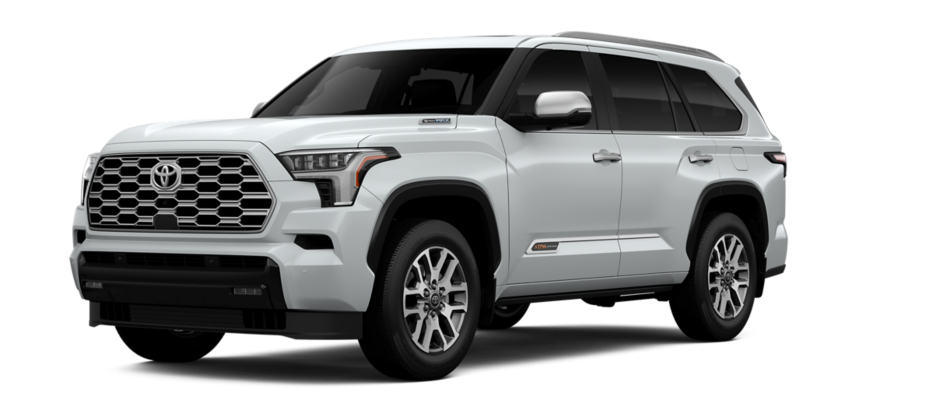
Just like trucks, many large SUVs—especially those with body-on-frame construction—still use Rear Wheel Drive as their default drivetrain. These SUVs are designed to carry more passengers, tow larger loads, and withstand rugged usage, which makes RWD the natural choice.
Popular RWD SUVs:
- Chevrolet Tahoe / Suburban – Large family haulers with V8 power and strong RWD chassis.
- Ford Expedition – Offers RWD base models with high towing capacity.
- Toyota Sequoia – Durable and spacious, with a traditional RWD setup.
- Nissan Armada – Full-size SUV with a truck-based Rear Wheel Drive foundation.
- Lexus LX / Toyota Land Cruiser – Although many trims use AWD, the underlying architecture is RWD-derived.
These SUVs often include an optional 4WD system, but their RWD structure is still evident in their towing specs, handling feel, and maintenance design.
Performance Sedans and Executive Cars
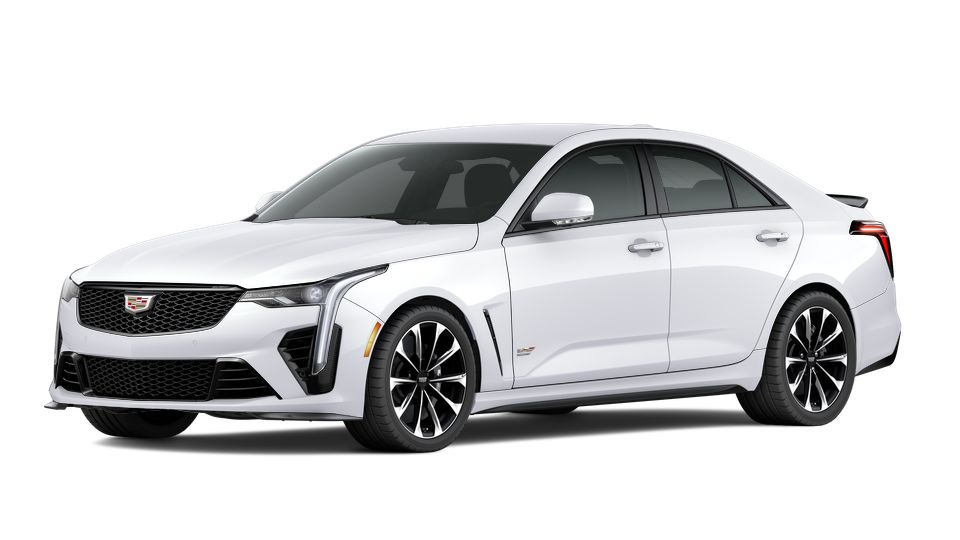
Beyond traditional luxury cars, many performance-oriented sedans and executive-class vehicles maintain RWD for better power delivery, comfort, and chassis dynamics. In this category, the goal is to merge luxury with agility, and RWD platforms make that possible.
Key RWD Performance Sedans:
- Alfa Romeo Giulia – Italian flair meets dynamic RWD balance.
- Cadillac CT4-V / CT5-V – Revived American performance sedans with track-ready tuning.
- Infiniti Q50 / Q70 – Smooth luxury combined with a rear-driven setup.
- Kia Stinger GT – A value-packed performance sedan with rear-wheel excitement.
These cars blur the line between everyday usability and enthusiast-level engagement, and many offer optional AWD while retaining their RWD foundation.
Electric Vehicles (EVs) with Rear Wheel Drive
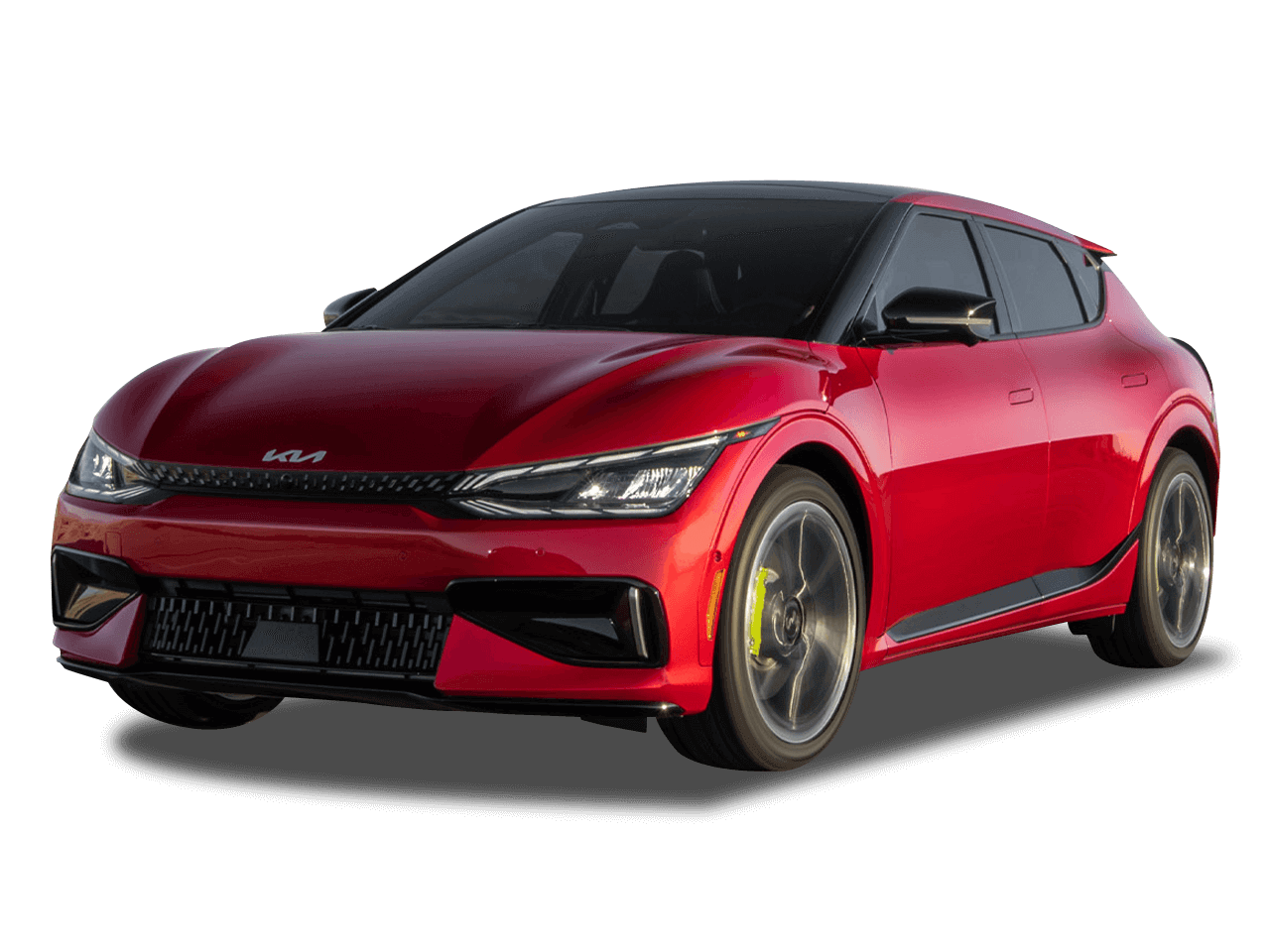
Interestingly, Rear Wheel Drive has made a resurgence in the electric vehicle segment. While many EVs are dual-motor AWD, several base or entry-level trims are single-motor Rear Wheel Drive, thanks to the simplicity and efficiency of placing an electric motor at the rear axle.
Popular RWD EVs:
- Tesla Model 3 (Base / RWD trim) – Offers strong acceleration and long range with rear-motor layout.
- Hyundai Ioniq 5 (RWD) – Single motor version focuses on range and simplicity.
- Kia EV6 (RWD) – Rear-drive trims still provide ample performance and better efficiency.
- Ford Mustang Mach-E (Select / RWD) – Blends classic Mustang spirit with modern EV dynamics.
- BMW i4 eDrive40 – Rear-drive electric performance with luxury appointments.
In these EVs, RWD continues to offer a natural balance of range, power, and cost-efficiency, especially for drivers who don’t need AWD.
Tabel: Popular Rear Wheel Drive Vehicles by Category
| Category | Brand & Model Examples |
|---|---|
| Luxury Sedans | BMW 5 Series, Mercedes E-Class, Lexus LS, Genesis G80 |
| Sports Cars | Ford Mustang, Mazda MX-5 Miata, Toyota GR Supra, Nissan Z, BMW M3 |
| Muscle Cars | Dodge Challenger, Chevrolet Camaro |
| Pickup Trucks | Ford F-150, Ram 1500, Toyota Tundra, Nissan Titan |
| Large SUVs | Chevrolet Tahoe, Ford Expedition, Toyota Sequoia, Lexus LX |
| Performance Sedans | Alfa Romeo Giulia, Cadillac CT5-V, Infiniti Q50, Kia Stinger |
| EVs (Rear-Drive) | Tesla Model 3 RWD, Hyundai Ioniq 5 RWD, BMW i4 eDrive40, Kia EV6 RWD |
Why Rear Wheel Drive Still Has a Place Across Vehicle Types
Despite the rise of FWD in compact cars and AWD in crossovers, Rear Wheel Drive continues to hold strong in segments that value strength, balance, or driver engagement. Whether you’re driving a luxury sedan, hauling cargo in a truck, or chasing apexes in a coupe, RWD delivers distinct advantages in feel, capability, and vehicle architecture.
For many drivers—especially those who prioritize authentic handling, better towing, or rear-biased balance—RWD remains the right choice. And as electric vehicles expand RWD usage through motor placement flexibility, it’s clear that Rear Wheel Drive isn’t just part of automotive history—it’s very much part of its future.
Rear Wheel Drive vs Other Drivetrains
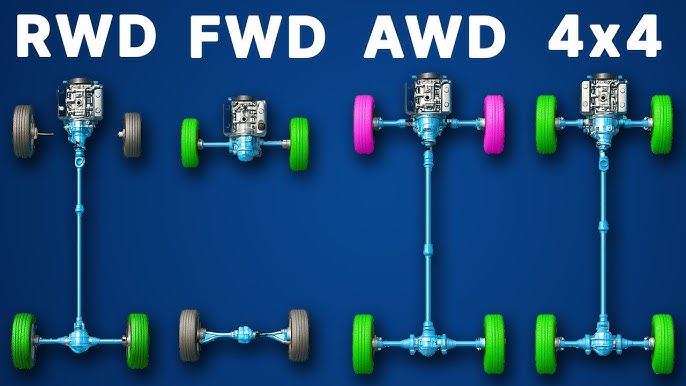
Choosing a vehicle drivetrain is about more than just how power reaches the wheels—it impacts everything from handling, fuel efficiency, safety, to long-term cost of ownership. While Rear Wheel Drive (RWD) offers clear advantages in balance and performance, it’s essential to understand how it compares to front-wheel drive (FWD), all-wheel drive (AWD), and four-wheel drive (4WD) systems.
Each drivetrain layout is designed for different driving needs and environments. Let’s break down how RWD stacks up against the others, highlighting their respective pros, cons, and ideal use cases.
RWD vs Front-Wheel Drive (FWD)
Front-wheel drive is the most common drivetrain layout today, especially in compact cars, sedans, and smaller crossovers. It delivers power to the front wheels, which also handle steering.
| Feature | Rear Wheel Drive (RWD) | Front-Wheel Drive (FWD) |
|---|---|---|
| Power Delivery | Rear wheels | Front wheels |
| Weight Distribution | More balanced | Front-heavy |
| Handling | Superior in performance driving | Predictable but less dynamic |
| Traction (Snow/Rain) | Poor without electronic aids | Better due to engine weight over drive wheels |
| Cabin Space | Reduced due to driveshaft and tunnel | More efficient layout |
| Fuel Efficiency | Slightly lower due to added weight and complexity | Generally higher, especially in smaller vehicles |
| Maintenance Costs | Higher for drivetrain components | Typically lower |
| Ideal For | Performance, luxury, towing | Economy cars, everyday driving, fuel savings |
Verdict: FWD is practical, affordable, and efficient, making it ideal for most daily drivers. However, RWD offers a superior driving experience for those who value precision, balance, and power.
RWD vs All-Wheel Drive (AWD)
All-wheel drive (AWD) sends power to all four wheels—either full-time or on-demand. It offers enhanced traction and stability in a wide range of conditions but adds weight and complexity.
| Feature | Rear Wheel Drive (RWD) | All-Wheel Drive (AWD) |
|---|---|---|
| Traction | Limited in poor weather | Excellent in all conditions |
| Handling | More dynamic in dry, less so in wet | Balanced and stable in mixed traction |
| Acceleration | Strong in dry, wheelspin possible in slippery roads | Grips harder in launches, especially in turbo cars |
| Weight & Complexity | Lower | Higher due to extra components |
| Fuel Efficiency | Better than AWD | Slightly worse due to added weight |
| Maintenance | Simpler drivetrain | More complex systems, more parts to maintain |
| Driving Feel | Engaging and “purer” | Stable, less connected to the road feel |
| Ideal For | Enthusiasts, sunny climates | All-season performance, variable road conditions |
Verdict: AWD is better for unpredictable weather or off-pavement conditions. RWD is more rewarding on dry roads and costs less to maintain.
RWD vs Four-Wheel Drive (4WD)
Four-wheel drive (4WD) is a part-time system commonly used in trucks and off-road vehicles. Unlike AWD, which is often automated, 4WD is typically driver-controlled and designed for rugged terrains.
| Feature | Rear Wheel Drive (RWD) | Four-Wheel Drive (4WD) |
|---|---|---|
| Usage Type | On-road | Off-road, heavy-duty |
| Drivetrain Engagement | Rear only | Selectable (2H, 4H, 4L) |
| Durability | Moderate | Built for rugged terrain and high stress |
| Traction | Moderate | Excellent in off-road and low-grip surfaces |
| Maintenance | Simpler | Requires more frequent drivetrain servicing |
| Vehicle Type | Sedans, sports cars, some SUVs | Pickup trucks, off-road SUVs |
| Fuel Efficiency | Higher due to lighter layout | Lower due to heavy components and 4WD system |
| Ideal For | Dry roads, track use | Off-roading, towing, snow, and mud |
Verdict: Choose 4WD for trail driving, serious towing, and all-terrain usage. RWD is better suited for highways, racetracks, or hauling on paved roads.
Visual Summary: Drivetrain Comparison Table
| Drivetrain | Power Delivery | Best For | Traction | Handling | Fuel Efficiency | Complexity |
|---|---|---|---|---|---|---|
| RWD | Rear wheels | Performance, towing, driving feel | Moderate (poor in snow) | Dynamic, balanced | Moderate | Medium |
| FWD | Front wheels | Economy, urban driving, winter | Good | Predictable | High | Low |
| AWD | All wheels | All-season performance, family cars | Excellent | Stable | Moderate | High |
| 4WD | Selectable all wheels | Off-road, towing, rural areas | Excellent (off-road) | Heavy, durable | Low | High |
Which Drivetrain Should You Choose?
The “best” drivetrain depends entirely on your lifestyle, location, and what you expect from your vehicle.
- Choose RWD if: You want performance driving, own a truck or sports car, or live in a dry climate.
- Choose FWD if: You’re budget-conscious, drive mostly in the city, or live in regions with moderate snow.
- Choose AWD if: You need year-round capability, drive in mixed conditions, or want extra peace of mind.
- Choose 4WD if: You frequently go off-road, tow heavy loads, or require maximum durability and control.
Why RWD Still Matters in the Age of AWD and FWD
Despite the growing popularity of AWD and the practicality of FWD, RWD continues to hold a unique and valuable position in automotive engineering. It’s the platform of choice for:
- High-performance sports cars that demand perfect weight distribution.
- Heavy-duty vehicles that need durability under towing and load stress.
- Luxury sedans where driving feel and smooth power delivery are essential.
- Electric vehicles, where rear-mounted motors offer an efficient drivetrain layout.
In many ways, RWD has adapted and evolved with modern needs. Electronic stability control systems and advanced traction management have addressed most of its historical weaknesses, particularly in bad weather. As a result, Rear Wheel Drive is no longer limited to ideal conditions or expert drivers.
Instead, it’s become a drivetrain that balances raw power with refined control, offering an experience that appeals equally to engineers, enthusiasts, and professionals.
Why Enthusiasts Still Prefer Rear Wheel Drive
In an automotive world increasingly defined by practicality, fuel efficiency, and technological assistance, Rear Wheel Drive (RWD) continues to hold a sacred place among driving purists. For enthusiasts, RWD isn’t just a drivetrain—it’s a philosophy. It represents a more honest, unfiltered relationship between the driver, the machine, and the road.
But what exactly makes RWD so beloved in the enthusiast community? Why do track day veterans, drifting champions, and weekend canyon carvers gravitate toward this layout—even when it comes with trade-offs? Let’s dive into the emotional and mechanical reasons behind RWD’s enduring appeal.
Unmatched Driving Feel and Engagement
Ask any seasoned driver what sets a great car apart from a good one, and you’ll likely hear the word: “feel.” RWD offers a sense of connection that other drivetrains often can’t replicate.
In an RWD setup:
- The front wheels handle steering only, allowing for pure and direct feedback through the steering wheel.
- The rear wheels do the job of moving the car, letting drivers modulate throttle and rotation independently of direction.
- The vehicle’s weight is often distributed more evenly between the front and rear axles, creating a sense of balance through corners.
This results in a more communicative, intuitive driving experience, especially when cornering at the limit. You can steer with the wheel, and with your right foot—a sensation that makes every turn feel alive.
Controlled Oversteer and Rear-End Dynamics
For those who drive on closed circuits or enjoy “spirited” weekend runs, RWD offers the holy grail of handling dynamics: predictable oversteer.
Oversteer occurs when the rear tires lose grip before the front ones, causing the rear end to slide outward. In front-wheel drive cars, this can be hard to control and often results in understeer (where the car pushes wide). But in an RWD car—with power going to the back—oversteer can be:
- Induced intentionally with throttle input
- Controlled skillfully with counter-steering
- Used to rotate the car through corners more effectively
This is particularly useful in performance driving or racing scenarios, where rotating the car mid-corner allows for faster corner exit speeds. For drifting enthusiasts, RWD is a necessity—allowing them to hold controlled slides, link turns, and display extreme car control.
Drifting: A Culture Built on RWD
The global drifting community would not exist as we know it without Rear Wheel Drive. From grassroots autocross events to the professional D1 Grand Prix and Formula Drift series, RWD vehicles form the backbone of this motorsport.
Why RWD is essential for drifting:
- Rear power delivery allows the car to initiate and sustain slides using throttle and counter-steering techniques.
- The drivetrain can handle clutch kicks, feints, and brake drifts, all of which require precision and rear-wheel traction control.
- RWD layouts are mechanically simpler to modify for angle kits, limited-slip differentials, and drift-specific setups.
Popular RWD drift platforms include:
- Nissan Silvia / 240SX (S13, S14, S15)
- Toyota AE86 / GT86 / GR86
- Mazda RX-7
- BMW E36 / E46 / E90 3 Series
- Ford Mustang (S197 and newer)
These cars are celebrated not just for their rear-wheel layout, but for how tuneable, predictable, and balanced they are when pushed sideways.
Rear Wheel Drive in Motorsport Legacy
Historically, nearly every major racing series was built on RWD platforms—from Formula One and Le Mans prototypes to touring cars and Group B rally machines. Even today, most high-level motorsports vehicles continue to rely on Rear Wheel Drive or rear-biased AWD for performance advantages.
Why RWD continues to dominate in motorsports:
- Weight transfer during acceleration benefits traction at the rear axle.
- The separation of steering and power delivery provides greater stability at high speeds.
- Chassis setup and suspension tuning are more flexible and efficient in a rear-driven layout.
Many professional race teams prefer RWD for its responsiveness under throttle, especially during high-speed corner exits. In racing, milliseconds matter—and RWD gives drivers the ability to rotate and position the car more precisely.
Tuning and Modification Advantages
Rear Wheel Drive cars are also a favorite for car tuners and performance builders because of their mechanical simplicity and flexibility:
- The longitudinal engine layout is easier to swap or upgrade.
- Rear differentials can be changed to adjust torque distribution or gearing.
- The suspension geometry can be tuned more independently for each axle.
This makes RWD platforms ideal for aftermarket upgrades, engine swaps (LS engines, 2JZ, RB26, etc.), and track builds. Enthusiasts who want to build their dream car from the ground up almost always choose a rear-wheel base.
Mechanical Purity and Minimalism
There’s something inherently satisfying about the mechanical purity of a Rear Wheel Drive car. Without the complexity of AWD transfer cases or the compromises of FWD layouts, RWD feels honest. Power comes from the front, goes through a direct line to the rear, and propels the car forward—simple, effective, and visceral.
For enthusiasts, this purity often leads to a more focused, driver-centric experience. There are fewer filters between your input and the car’s behavior. Whether you’re accelerating out of a hairpin, sliding through a corner, or just enjoying a winding backroad, RWD amplifies the driver’s role in how the car performs.
Resurgence in Modern Performance Cars and EVs
Interestingly, as the industry moves toward electrification, Rear Wheel Drive is making a strong comeback—especially in single-motor EVs. With electric motors mounted on the rear axle, engineers are rediscovering the advantages of pushing the vehicle rather than pulling it.
Cars like the Tesla Model 3 RWD, BMW i4 eDrive40, and Hyundai Ioniq 5 RWD offer a surprising amount of performance while keeping the rear-drive characteristics enthusiasts love:
- Neutral steering feel
- Predictable rotation under throttle
- Balanced acceleration with weight over the rear axle
This trend suggests that RWD will remain relevant—even in a post-internal combustion era.
Rear Wheel Drive isn’t the easiest to drive in the rain. It’s not the cheapest to maintain. It doesn’t always offer the most cargo room or traction. But for those who love cars, it offers something deeper: engagement, challenge, control, and joy.
It makes every corner an opportunity, every acceleration an experience, and every commute just a bit more exciting. In the hands of someone who understands it, RWD becomes an extension of the driver’s intent—a partner in motion, rather than just a machine.
And that’s why, even as the market evolves and technology changes, Rear Wheel Drive will always have a home in the garages—and hearts—of enthusiasts everywhere.
Conclusion: Is Rear Wheel Drive Right for You?
Rear Wheel Drive (RWD) is more than just a technical drivetrain configuration—it’s a deliberate design choice that influences how a vehicle performs, feels, and behaves across various driving conditions. Whether you’re buying a car for daily commuting, weekend canyon carving, towing heavy loads, or pure driving pleasure, understanding the role of RWD helps you make a more informed and satisfying decision.
Throughout this article, we’ve seen how RWD stands apart from front-wheel drive (FWD), all-wheel drive (AWD), and four-wheel drive (4WD) in key areas such as:
- Handling and performance dynamics
- Load distribution and towing strength
- Mechanical simplicity and modifiability
- Driver engagement and feedback
But as much as it excels in these areas, RWD also comes with considerations—reduced traction in poor weather, heavier components, and a steeper learning curve for new drivers.
So how do you know if Rear Wheel Drive is the right choice for your specific needs?
RWD Might Be Right for You If…
- You prioritize performance, balance, and handling over raw traction.
- You live in a climate with mostly dry roads or don’t often encounter snow or ice.
- You want a vehicle that offers more precise control and a sportier feel.
- You plan to use your vehicle for towing, hauling, or track days.
- You’re interested in modifying or tuning your car for performance.
- You’re an enthusiast who wants direct engagement with the road.
RWD Might Not Be Ideal If…
- You live in areas with harsh winters, steep hills, or year-round slippery conditions.
- You need a vehicle that’s easy to control in all weather, regardless of driving skill.
- You prefer low-cost maintenance and maximum cabin space.
- Your driving focus is on fuel economy, simplicity, or urban practicality.
The Future of RWD: Evolving, Not Fading
Despite the dominance of FWD and AWD in today’s mass-market vehicles, Rear Wheel Drive remains an essential part of the automotive world. It’s alive and well in:
- Luxury sedans from BMW, Mercedes, and Genesis
- Performance coupes like the Toyota GR Supra and Mustang GT
- Electric vehicles where rear-mounted motors offer efficiency and balance
- Pickup trucks and SUVs that require towing power and strength
- Motorsports and drifting, where driving skill and vehicle control take center stage
As technology evolves, RWD is evolving with it. Electronic stability systems have addressed past weaknesses, while EV platforms have given it new life in a world of zero emissions.
In short, RWD may not be for everyone—but for those who appreciate the nuance of control, the purity of power delivery, and the emotional connection to driving, Rear Wheel Drive will always offer something special.
Rear Wheel Drive isn’t just about where the power goes. It’s about where the thrill begins.
FAQ About Rear-Wheel Drive (RWD)
What is rear-wheel drive and how does it work?
Rear-wheel drive (RWD) is a drivetrain configuration where power from the engine is sent to the rear wheels of the vehicle. This setup separates steering and propulsion—front wheels handle steering while rear wheels handle power—resulting in better weight distribution and handling performance. Power travels through the transmission and driveshaft to the rear differential, which then turns the rear wheels.
Is rear-wheel drive good for driving in snow or rain?
Rear-wheel drive is generally not ideal for slippery conditions such as snow, ice, or heavy rain. Since the engine is typically in the front and the drive wheels are in the rear, there’s less weight over the rear tires, reducing traction. However, traction control systems, snow tires, or carrying weight in the trunk can improve grip. For consistently snowy climates, all-wheel drive (AWD) or front-wheel drive (FWD) is often more practical.
Why do sports cars and performance vehicles use rear-wheel drive?
Rear-wheel drive provides superior handling dynamics, better weight balance, and allows for controlled oversteer—making it the preferred layout for sports cars, muscle cars, and race vehicles. By separating steering and driving forces between the front and rear axles, RWD enables more precise cornering and throttle control, which is essential in high-performance driving.
What are the main differences between RWD, FWD, AWD, and 4WD?
The key differences lie in how each drivetrain distributes power:
RWD: Power to rear wheels; great for performance and towing.
FWD: Power to front wheels; better for fuel economy and snow.
AWD: Power to all wheels automatically; ideal for all-weather driving.
4WD: Selectable power to all wheels; best for off-road and heavy-duty use.
Each has unique advantages depending on climate, driving style, and vehicle purpose.
Are rear-wheel drive cars more expensive to maintain?
RWD vehicles can be slightly more expensive to maintain due to additional drivetrain components like the driveshaft, rear differential, and rear axle. However, they often have simpler front suspensions and better engine bay access. Overall, maintenance costs depend more on the vehicle model and usage than the drivetrain alone.

